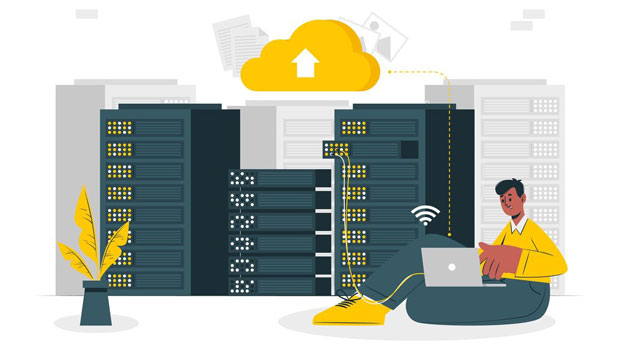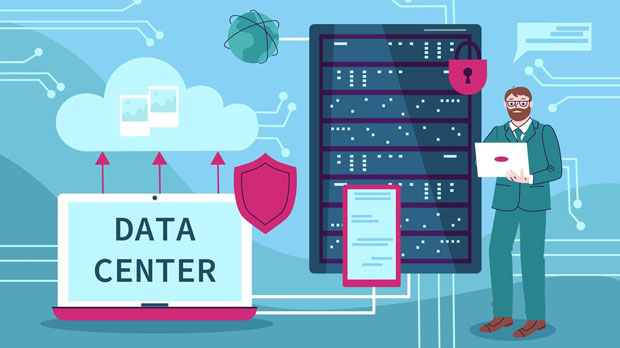For enterprise users, choosing the right proxy service is crucial for ensuring seamless online operations, safeguarding privacy, and enhancing data security. When comparing two popular proxy solutions—Proxyium and PYPROXY—the main consideration often comes down to cost-effectiveness. Both services offer unique features and functionalities, but which one delivers the best value for the money? This article explores a comprehensive analysis of both options, delving into pricing, features, scalability, and performance to help businesses make an informed decision. Overview of Proxyium and PyproxyBefore we dive into the comparison, it's important to understand the basic offerings of both services. Proxyium is a versatile proxy service widely recognized for its reliability and broad range of integration options, often used by enterprises requiring efficient handling of multiple proxy requests. On the other hand, Pyproxy is a newer entrant in the proxy service space, offering specialized tools tailored for modern business needs. Its focus is on offering high-performance proxies with advanced features like IP rotation and geo-targeting. Both services cater to businesses looking for secure and scalable proxy solutions but differ significantly in their approach.Cost Structure: Proxyium vs PyproxyOne of the first points of comparison is the cost structure. Enterprise users typically prioritize predictable and transparent pricing, so understanding how each service charges is key.Proxyium follows a tiered pricing model based on usage and the number of proxies required. It offers several plans, from basic to enterprise-level, making it a flexible option for businesses with varying needs. While the initial costs may seem reasonable, enterprises with high volumes of proxy requests may face increasing costs over time due to additional charges for higher bandwidth or premium services.Pyproxy, in contrast, offers a more streamlined and scalable pricing model, focusing on offering high-quality proxies at a competitive rate. Although slightly more expensive upfront, Pyproxy's pricing is often more favorable for businesses that require frequent proxy use, as it typically includes unlimited bandwidth and premium features in its base packages. This can reduce the overall cost for businesses with larger, more demanding needs.Conclusion on Cost: Proxyium may have lower starting costs, but Pyproxy can offer better long-term value for businesses requiring higher bandwidth and more specialized proxy services.Performance: Speed and ReliabilityWhen it comes to proxies, performance is paramount. A proxy service's speed and reliability directly impact the efficiency of business operations, especially for enterprises that rely on real-time data scraping, API integrations, or web scraping.Proxyium excels in basic proxy performance with fast and reliable connections. However, its performance may vary depending on the location of proxy servers and the volume of requests. For enterprises operating in diverse geographic regions, this could become a challenge, as latency might affect the overall user experience. Pyproxy, however, is designed with performance in mind, offering a dedicated infrastructure that focuses on high-speed proxies with optimized routing and minimal latency. It also offers advanced features such as automatic IP rotation, which improves both speed and reliability over time. Pyproxy's higher-end plans guarantee faster speeds and more stable connections, making it an ideal choice for businesses that require continuous proxy access with minimal interruptions.Conclusion on Performance: Pyproxy stands out in terms of performance, especially for enterprises needing reliable and fast proxy connections in a global context.Features and FlexibilityFor businesses, a proxy service’s features can make or break its usefulness. Both Proxyium and Pyproxy offer various proxy-related tools, but their approaches differ.Proxyium offers a range of proxy types, including residential and data center proxies, catering to different enterprise needs. It also provides essential features like session control, unlimited connections, and basic IP rotation. However, its feature set might not be as advanced as what some enterprises require for more complex operations.Pyproxy provides more sophisticated features, including detailed geo-targeting, automatic IP rotation, customizable proxy rules, and anti-captcha features. These tools are especially beneficial for businesses engaging in large-scale data collection or managing digital marketing campaigns targeting specific regions. Pyproxy’s user interface is also designed with enterprise users in mind, offering a more flexible and intuitive way to manage proxies.Conclusion on Features: Pyproxy offers a richer set of advanced features that could be particularly beneficial for enterprises with complex needs, whereas Proxyium provides solid basic features suitable for less demanding use cases.ScalabilityAs businesses grow, their need for scalable solutions increases. Choosing a proxy service that can scale with business growth is essential for long-term success.Proxyium offers scalability but can become costly as businesses scale up. The service's tiered pricing model means that as enterprises require more proxies or bandwidth, costs will rise significantly. Additionally, the setup might require more manual adjustments as the business scales, which could be a burden for companies with limited technical resources.Pyproxy, on the other hand, provides more flexibility and ease of scaling. With its unlimited bandwidth options and high-performance infrastructure, enterprises can increase their usage without worrying about hitting service limits or facing dramatic price hikes. Pyproxy's cloud-based infrastructure allows businesses to scale their operations seamlessly with minimal disruption.Conclusion on Scalability: Pyproxy offers more seamless scalability, making it a better option for businesses planning for growth or those with fluctuating proxy demands.Security and PrivacyBoth Proxyium and Pyproxy place a high emphasis on security, but their approaches and available features differ slightly.Proxyium provides robust encryption for secure data transmission, and it supports anonymous browsing to ensure privacy. However, its security features are relatively standard and may not meet the needs of businesses operating in high-risk industries.Pyproxy, in comparison, offers more advanced security features, such as dedicated IPs, SOCKS5 support, and enhanced encryption protocols. For enterprises that prioritize privacy and require high levels of data security, Pyproxy’s offerings are more tailored to meet stringent business requirements.Conclusion on Security: Pyproxy offers superior security and privacy features, making it the better option for businesses with high-security needs.Customer Support and User ExperienceEffective customer support and a user-friendly interface are key factors for businesses, particularly those without dedicated IT teams.Proxyium offers standard customer support through email and online resources, but it lacks 24/7 availability or dedicated account management for larger enterprises. This could be a limitation for businesses needing prompt assistance.Pyproxy provides a more robust support system, including 24/7 customer service, live chat, and personalized account management. Their support staff is highly trained and responsive, ensuring that businesses can resolve issues quickly without downtime.Conclusion on Customer Support: Pyproxy has the edge with superior customer service and more responsive support channels.Final Verdict: Which is More Cost-Effective?When considering cost-effectiveness, the decision between Proxyium and Pyproxy largely depends on the specific needs and growth potential of the enterprise. Proxyium might be a more budget-friendly option for small businesses or those with minimal proxy usage. However, for larger enterprises requiring advanced features, scalability, and high-performance proxies, Pyproxy ultimately offers better value for money in the long term.Enterprises focused on performance, security, and growth should consider Pyproxy for its comprehensive features, superior scalability, and excellent customer support. For those seeking basic proxy functionalities at a lower cost, Proxyium remains a viable choice.
Aug 28, 2025



































































